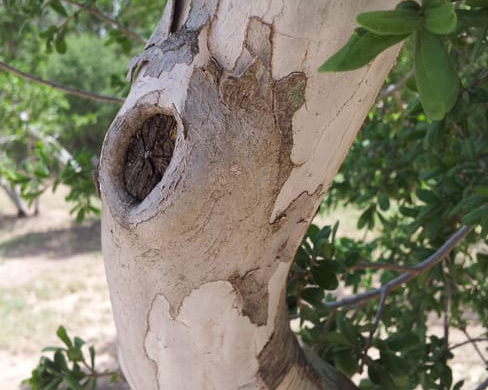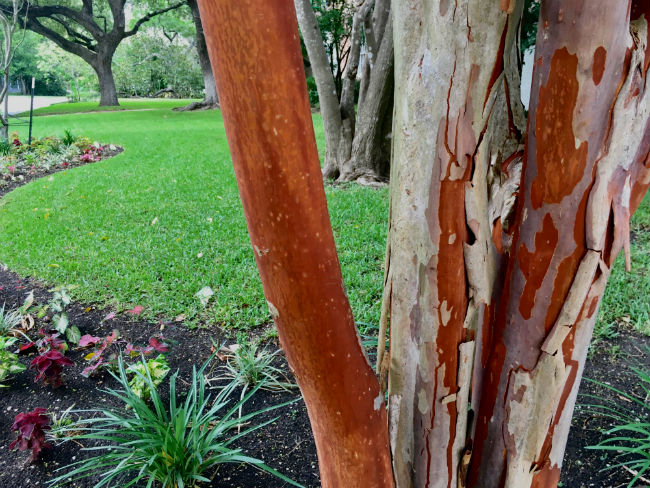The madrone tree is known for its lovely exfoliating bark, but San Antonio soils are all wrong for it. Rest assured, there are a couple of alternatives to ease your broken heart.
Chances are you have or will visit Big Bend National Park. After all, more than 16 million people have since 1944, according to the National Park Service website. And if you go this time of year, I can tell you what will inevitably happen.
As you’re driving down the endless stretch of US Highway 385 a flash of red will catch your eye. The madrone tree might be one of the most beautiful trees you’ve ever seen with its rich, lustrous red bark peeking out from scraps of peeling brown remnants. Based solely on its beauty, you make a note to purchase one at your favorite nursery when you get home.
But this love can’t last. San Antonio soils are all wrong for the madrone tree.
According to the Garden Geek, who was also our region’s resident state forester for 23 years, madrones are members of the Heath family which have a very complex relationship with mycorrhizae, a family beneficial fungi. It’s difficult to find or recreate mycorrhizae in urban soils. That being said, we have a couple of alternatives to ease your broken heart.
Texas Persimmon
While the bark isn’t red, Texas persimmon’s smooth, muscular trunks peel in shades of silver, black and white — making this the perfect tree to show your Spurs pride! This native persimmon is a workhorse in the watersaver garden and bears black fruits that can be used to make jams and jellies.
Caring for the Texas persimmon is easy, too. Plant it in an area with full sun and space to grow. Mulch the root area with 2 inches of mulch and water when rainfall is absent for several weeks.
Natchez Crape Myrtle
When it comes to traffic-stopping red bark, Indian crape myrtle, aka Natchez, is hard to beat — plus, it grows well in San Antonio! Its falling flowers dust the ground with delicate white flakes all summer long. Natchez is also resistant to powdery mildew. See it at the San Antonio Botanical Garden.
Caring for the crape myrtle is the exact same as for the Texas persimmon — mulch 2 inches and water if rain is absent for an extended period of time. Avoid pruning, removing only the dead, damaged and crossing branches. Do not by any means commit crape murder, or the severe and indiscriminate topping of crape myrtles.
Check out our previously published articles on how to properly plant trees and how to establish trees, and be sure to look into the Green Shade Tree Rebate program before planting a tree. It starts in October and you could qualify for a $50 rebate!
These trees would also look great surrounded by drought tolerant plants purchased with our WaterSaver Landscape coupons. The application for that program re-opens Aug. 15 — mark it in your calendar and get ready for fall planting!




